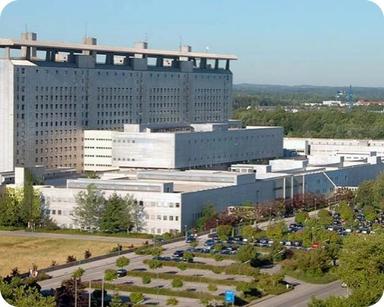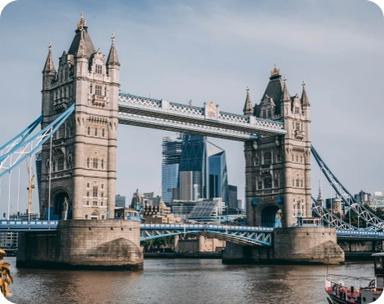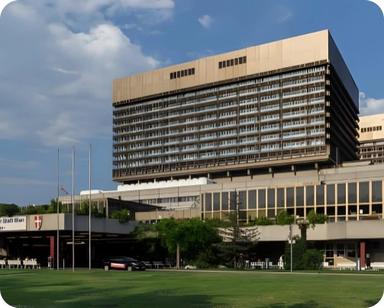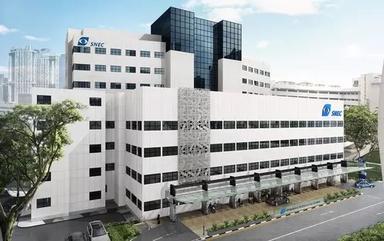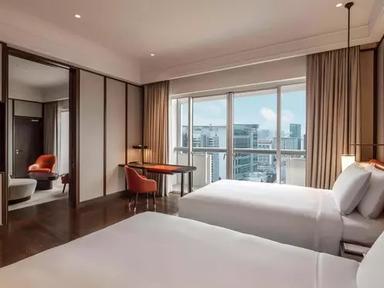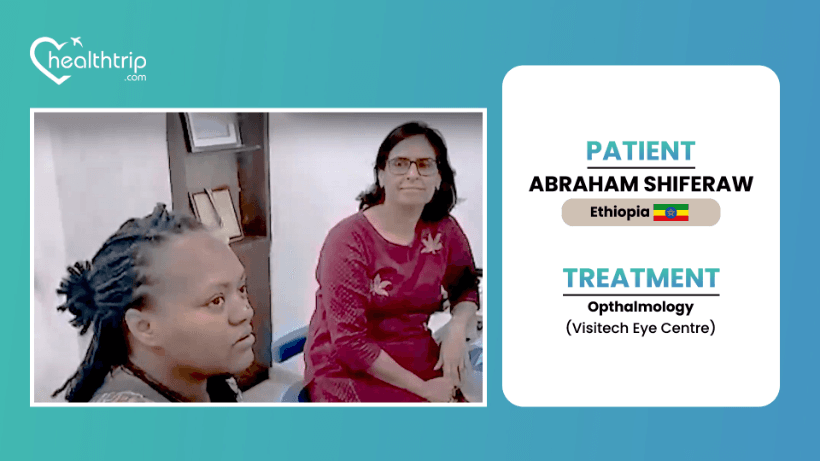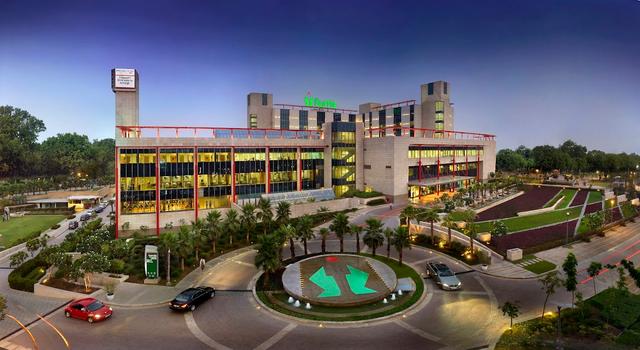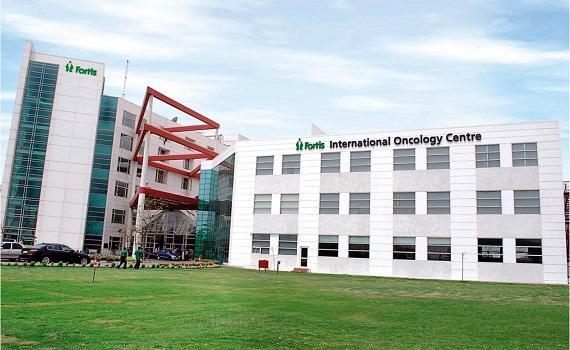Packages starting from
$1200
Need help in choosing the right package for your medical trip?
Your Health data is protected with us
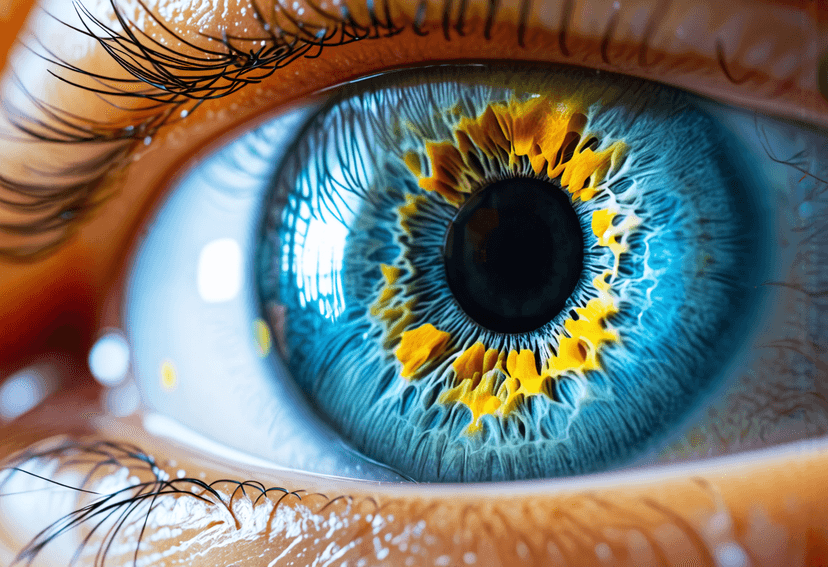
Transforming Lives with Glaucoma Eye
Glaucoma Treatment In India
- The average cost of treatment for Glaucoma in India starts from 1200 USD
- The success rate for the treatment is 70-90% for at least a year post-treatment.
- Some of the best hospitals in India to seek treatment at are Spectra Eye, Center For Sight and W Pratiksha Hospital. Trusted ophthalmologists in India are Dr. Suraj Munjal, Dr Ritesh Narula and Dr Dheeraj Gupta.
- The surgery for Glaucoma requires only one sitting. However, a stay of a week in India is recommended.
About Glaucoma Treatment
Vision-related concerns affect people of all ages around the world. Glaucoma is one such disorder that causes severe damage to the functioning of the eye and vision of the person. The optic nerve (the connecting circuit between the eye and the brain) is destroyed or severely challenged by the condition, and the person ends up losing complete or partial vision in the affected eye. Sadly, the damage cannot be reversed and is usually permanent.
Types of Glaucoma and Intervention
- Primary open-angle glaucoma - When the eye’s drainage system fails, the pressure rises within the eyeball, causing this particular kind of glaucoma. This is chronic glaucoma that affects the optic nerve and is the most common kind. Doctors suggest eye drops to reduce the pressure in the eye.
- Primary angle-closure glaucoma - More prevalent in people above 40, this glaucoma is caused by the displacement of the Iris and shift in eyeball pressure. Doctors prescribe intravenous injections and intensive usage of eye drops to prevent further damage. However, they may also recommend LASIK.
- Secondary glaucoma - This type of glaucoma can either be a close angle or open-angle and caused by secondary causes that are the focus of diagnosis. The doctors recommend immediate treatment to manage symptoms and reduce eye pressure.
- Developmental glaucoma - Glaucoma is usually uncommon in children below the age of 50; however, when the disease affects a child, it is termed as developmental glaucoma. The treatment remains the same - reducing the pressure inside the eye using eye drops and surgery.
Risks Associated with Glaucoma Treatment
Glaucoma treatment begins as soon as the symptoms start to appear. Doctors prescribe eye drops to reduce pressure and to avoid further damage to the optic nerve. However, eventually, the patient has to undergo surgery which is either done through LASIK or incision based microsurgery. There are a fair number of risks associated with the treatment. The risks include factors such as irritation and inflammation in the eyes or loss of vision due to the disease. Some complications may arise due to surgery such as bleeding inside the eyeball, infections and rising pressure.
Before Treatment
There are many diagnostic tests that the patient has to go through before treatment procedures kick in.
- Tonometry test- The primary test to assess the inner eye pressure
- Slit-lamp examination- The eyes are evaluated through a bright slit 3-D viewing light.
- Ophthalmoscopy- Assessment of the color, shape and other features of the optic nerve, and the damage that has been caused
- Perimetry (Visual field test)- Doctors test the field of vision through this test. They do this to gauge the damage that the disease has caused.
- Pachymetry- Assessment of the structure, and thickness of the cornea and potential damage
- Gonioscopy- Doctors conduct this test to assess the angle of Iris and the type of glaucoma.
During Treatment
- Eye Drops - Eye drops help to neutralize the rising pressure in the affected eye by reducing the formation of the aqueous medium. This intervention is recommended as the first step in treatment to prevent or minimize damage to the optic nerve (and avoid blindness.)
- Laser Surgery - Laser surgery helps to change the outflow of the aqueous medium fluid and maintain a healthy balance. There are three kinds of laser surgery that the doctors may recommend in the course of treatment: Trabeculoplasty- The trabecular mesh is removed from the eye to increase the outflow. Iridotomy- The surgeon makes a small hole on the iris to ease the outflow of the fluid. Cyclophotocoagulation- Laser is directed towards the middle of the eye to reduce the flow.
- Microsurgery/trabeculectomy - Doctors perform this to medically induce drainage when the eye’s drainage systems fail. An incision is made as part of the surgery to reduce intraocular pressure.
Post Treatment
- If the patient is receiving treatment through eye drops, the surgeon will assess the impact and advise the patient to not engage in any strenuous activity. The side effects may include allergy to the eye drops, temporary blurriness, redness, and a close check is maintained through regular checkups on the damage it causes to the heart and the lungs.
- Post laser surgery, the patient leaves with eye pads, and doctors recommend continuous monitoring of the healing process. There may be some inflammation of the eye, and there’s a risk of infection.
- Post microsurgery as well, the patient is monitored thoroughly, with a prescription of antibacterial medication and adequate information about common side effects that include infection, bleeding and temporary loss of vision.
Factors Affecting Treatment cost of Glaucoma
- Severity of the disease The cost of treating glaucoma increases with the severity of the disease. Patients having more than three changes in a year in their glaucoma drug therapy cost five times more than patients requiring no such adjustment.
- Type of disease in Glaucoma Treatment of ocular hypertension is cheaper than open-angle glaucoma.
- Hospital Glaucoma care in an academic hospital is more costly than in a general hospital.
- Surgical interventions and changing therapy may drive costs, but medication and physician visits and examination have been identified as the aspects of glaucoma disease that contribute most to total costs.
Testimonials
“To live with such a condition for over six years is a daunting experience. Treatment costs are through the roof, and it is a painfully slow process. Hospals helped me receive some of the best care that I could in India at a rather affordable price, and managing it in the long-term has become easier given the severity of this disorder.”
- Zakir, Iran
“It is a miracle that I can still see. Doctors told me I’d go blind in a few years, and treatment was gruesome and expensive. Hospals helped me work out a plan that suited my needs and, a year later, I have my vision intact at 80% in one eye and 100% in the other.”
- Aden, Yemen
“It is tragic that not enough people know about how difficult the condition is and how it affects the mental and physical health of the patient. I lost almost 50% vision in one eye until I began treatment and luckily, there hasn’t been any further damage. Thanks to Hospals, I received proper treatment by one of the best doctors in Hyderabad.”
- Arshiya, Libya
“It hasn’t been easy staying in a different country and figuring out the best treatment for your disease. Hospals supported me to find what worked for me in Delhi, and I can happily say that the damage control was great, and we could prevent further degeneration of my vision.”
- Azar Yan Elahi, Iraq
5.0
92% Rated Value for Money
Why Choose us?
98%
Success Rate
22+
Glaucoma Eye Surgeons
1+
Glaucoma Eye
33+
Hospitals Around the world
22+
Lives touched
Overview
Glaucoma Treatment In India
- The average cost of treatment for Glaucoma in India starts from 1200 USD
- The success rate for the treatment is 70-90% for at least a year post-treatment.
- Some of the best hospitals in India to seek treatment at are Spectra Eye, Center For Sight and W Pratiksha Hospital. Trusted ophthalmologists in India are Dr. Suraj Munjal, Dr Ritesh Narula and Dr Dheeraj Gupta.
- The surgery for Glaucoma requires only one sitting. However, a stay of a week in India is recommended.
About Glaucoma Treatment
Vision-related concerns affect people of all ages around the world. Glaucoma is one such disorder that causes severe damage to the functioning of the eye and vision of the person. The optic nerve (the connecting circuit between the eye and the brain) is destroyed or severely challenged by the condition, and the person ends up losing complete or partial vision in the affected eye. Sadly, the damage cannot be reversed and is usually permanent.
Types of Glaucoma and Intervention
- Primary open-angle glaucoma - When the eye’s drainage system fails, the pressure rises within the eyeball, causing this particular kind of glaucoma. This is chronic glaucoma that affects the optic nerve and is the most common kind. Doctors suggest eye drops to reduce the pressure in the eye.
- Primary angle-closure glaucoma - More prevalent in people above 40, this glaucoma is caused by the displacement of the Iris and shift in eyeball pressure. Doctors prescribe intravenous injections and intensive usage of eye drops to prevent further damage. However, they may also recommend LASIK.
- Secondary glaucoma - This type of glaucoma can either be a close angle or open-angle and caused by secondary causes that are the focus of diagnosis. The doctors recommend immediate treatment to manage symptoms and reduce eye pressure.
- Developmental glaucoma - Glaucoma is usually uncommon in children below the age of 50; however, when the disease affects a child, it is termed as developmental glaucoma. The treatment remains the same - reducing the pressure inside the eye using eye drops and surgery.
Risks Associated with Glaucoma Treatment
Glaucoma treatment begins as soon as the symptoms start to appear. Doctors prescribe eye drops to reduce pressure and to avoid further damage to the optic nerve. However, eventually, the patient has to undergo surgery which is either done through LASIK or incision based microsurgery. There are a fair number of risks associated with the treatment. The risks include factors such as irritation and inflammation in the eyes or loss of vision due to the disease. Some complications may arise due to surgery such as bleeding inside the eyeball, infections and rising pressure.
Before Treatment
There are many diagnostic tests that the patient has to go through before treatment procedures kick in.
- Tonometry test- The primary test to assess the inner eye pressure
- Slit-lamp examination- The eyes are evaluated through a bright slit 3-D viewing light.
- Ophthalmoscopy- Assessment of the color, shape and other features of the optic nerve, and the damage that has been caused
- Perimetry (Visual field test)- Doctors test the field of vision through this test. They do this to gauge the damage that the disease has caused.
- Pachymetry- Assessment of the structure, and thickness of the cornea and potential damage
- Gonioscopy- Doctors conduct this test to assess the angle of Iris and the type of glaucoma.
During Treatment
- Eye Drops - Eye drops help to neutralize the rising pressure in the affected eye by reducing the formation of the aqueous medium. This intervention is recommended as the first step in treatment to prevent or minimize damage to the optic nerve (and avoid blindness.)
- Laser Surgery - Laser surgery helps to change the outflow of the aqueous medium fluid and maintain a healthy balance. There are three kinds of laser surgery that the doctors may recommend in the course of treatment: Trabeculoplasty- The trabecular mesh is removed from the eye to increase the outflow. Iridotomy- The surgeon makes a small hole on the iris to ease the outflow of the fluid. Cyclophotocoagulation- Laser is directed towards the middle of the eye to reduce the flow.
- Microsurgery/trabeculectomy - Doctors perform this to medically induce drainage when the eye’s drainage systems fail. An incision is made as part of the surgery to reduce intraocular pressure.
Post Treatment
- If the patient is receiving treatment through eye drops, the surgeon will assess the impact and advise the patient to not engage in any strenuous activity. The side effects may include allergy to the eye drops, temporary blurriness, redness, and a close check is maintained through regular checkups on the damage it causes to the heart and the lungs.
- Post laser surgery, the patient leaves with eye pads, and doctors recommend continuous monitoring of the healing process. There may be some inflammation of the eye, and there’s a risk of infection.
- Post microsurgery as well, the patient is monitored thoroughly, with a prescription of antibacterial medication and adequate information about common side effects that include infection, bleeding and temporary loss of vision.
Factors Affecting Treatment cost of Glaucoma
- Severity of the disease The cost of treating glaucoma increases with the severity of the disease. Patients having more than three changes in a year in their glaucoma drug therapy cost five times more than patients requiring no such adjustment.
- Type of disease in Glaucoma Treatment of ocular hypertension is cheaper than open-angle glaucoma.
- Hospital Glaucoma care in an academic hospital is more costly than in a general hospital.
- Surgical interventions and changing therapy may drive costs, but medication and physician visits and examination have been identified as the aspects of glaucoma disease that contribute most to total costs.
Testimonials
“To live with such a condition for over six years is a daunting experience. Treatment costs are through the roof, and it is a painfully slow process. Hospals helped me receive some of the best care that I could in India at a rather affordable price, and managing it in the long-term has become easier given the severity of this disorder.”
- Zakir, Iran
“It is a miracle that I can still see. Doctors told me I’d go blind in a few years, and treatment was gruesome and expensive. Hospals helped me work out a plan that suited my needs and, a year later, I have my vision intact at 80% in one eye and 100% in the other.”
- Aden, Yemen
“It is tragic that not enough people know about how difficult the condition is and how it affects the mental and physical health of the patient. I lost almost 50% vision in one eye until I began treatment and luckily, there hasn’t been any further damage. Thanks to Hospals, I received proper treatment by one of the best doctors in Hyderabad.”
- Arshiya, Libya
“It hasn’t been easy staying in a different country and figuring out the best treatment for your disease. Hospals supported me to find what worked for me in Delhi, and I can happily say that the damage control was great, and we could prevent further degeneration of my vision.”
- Azar Yan Elahi, Iraq


